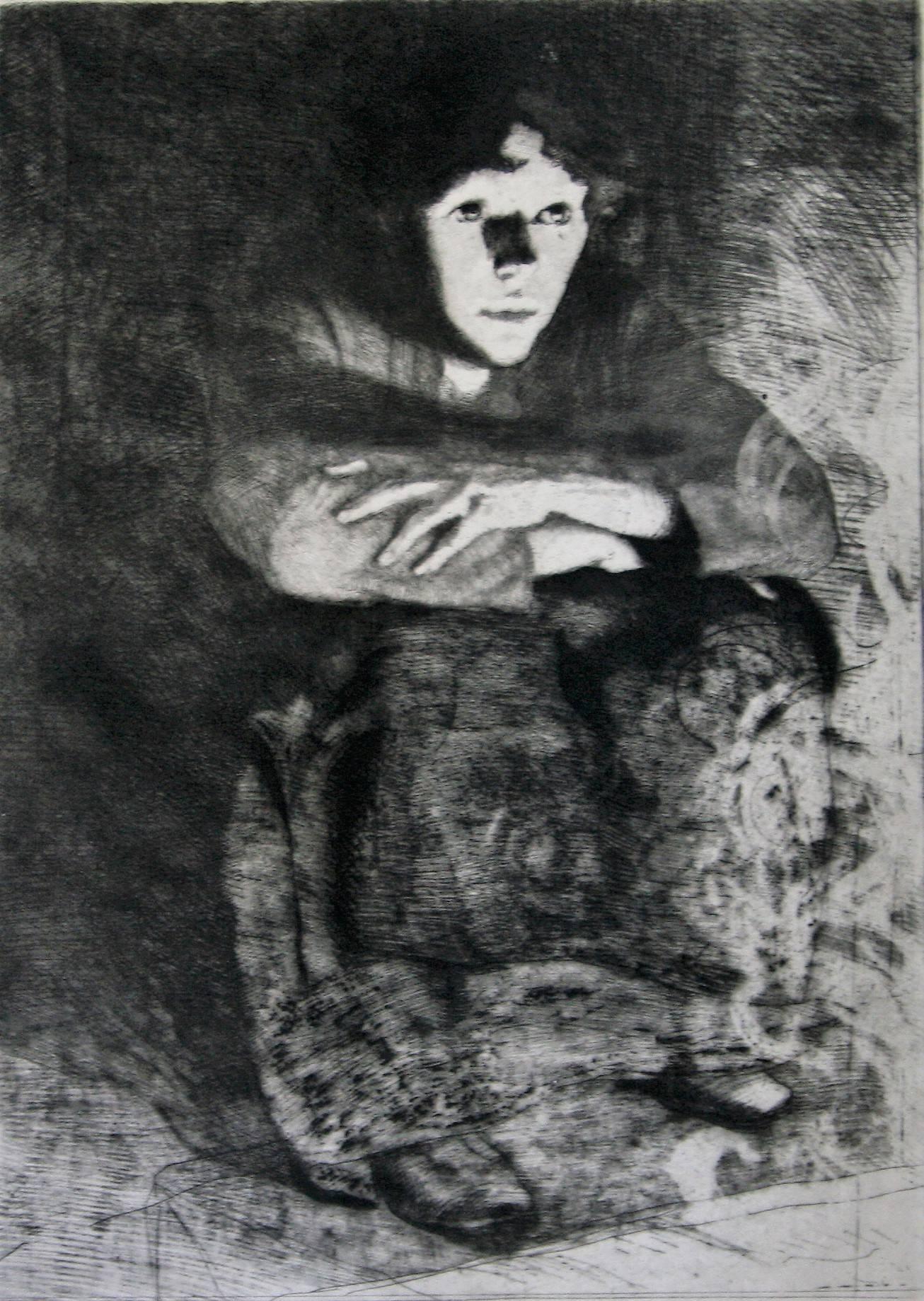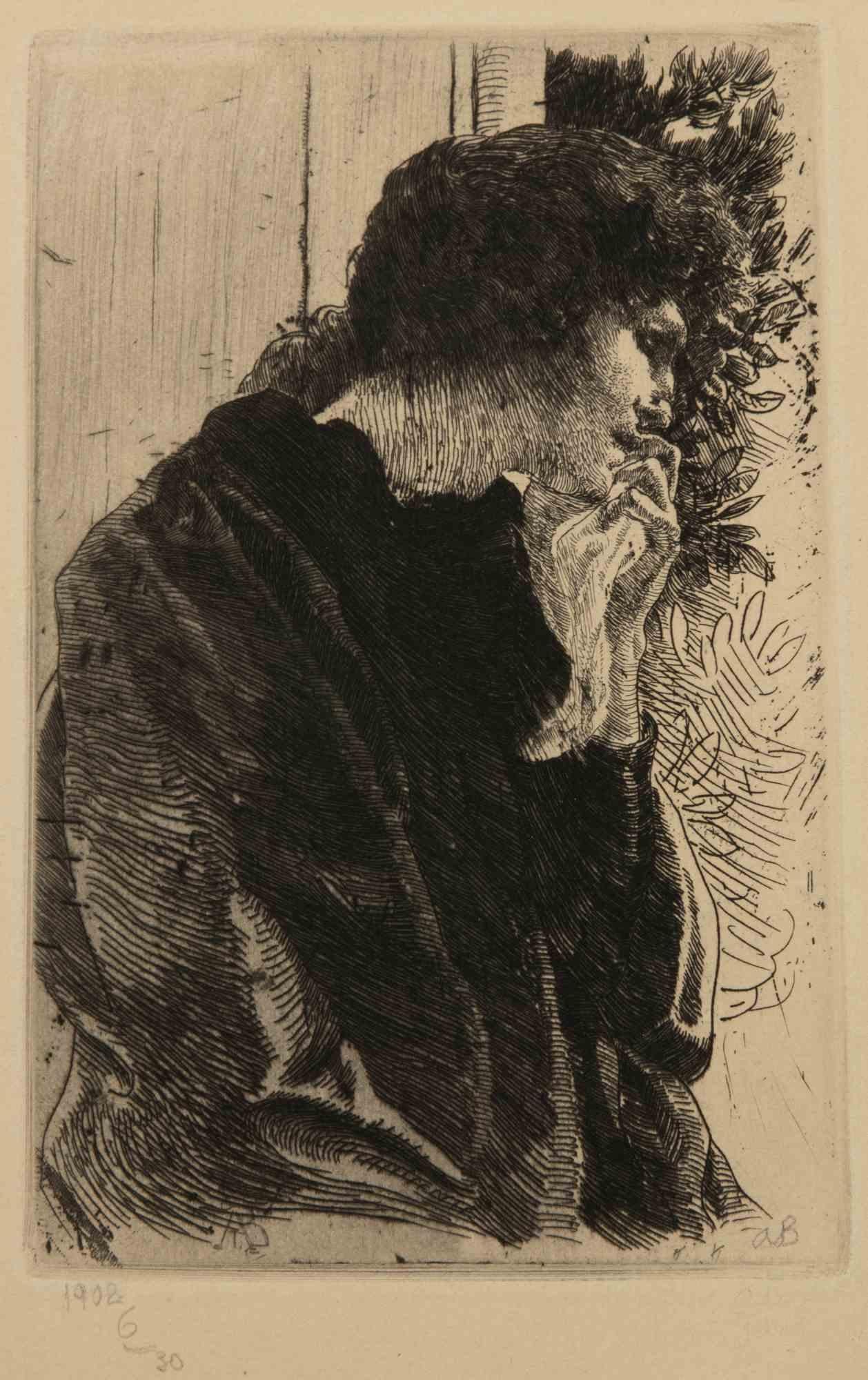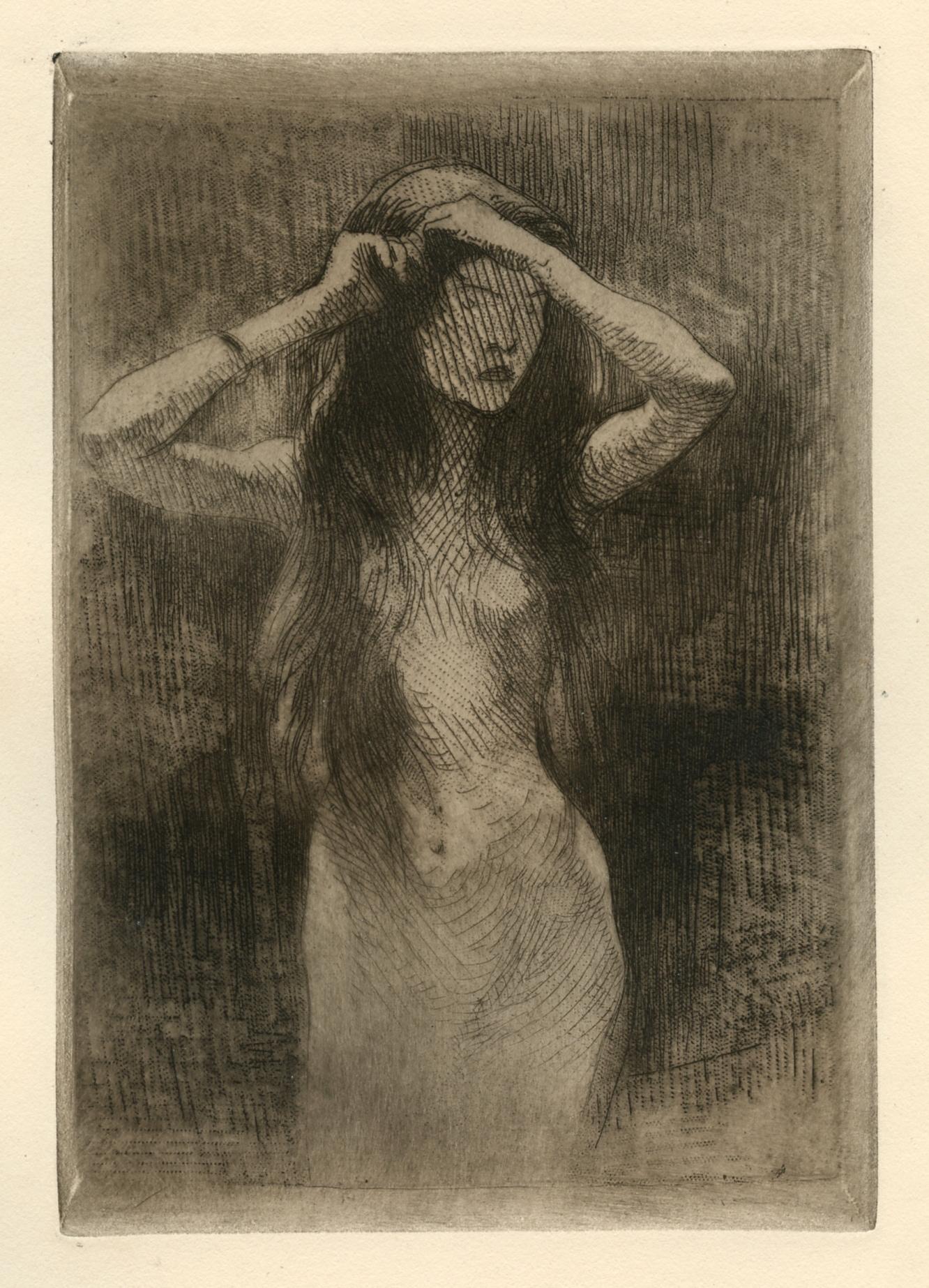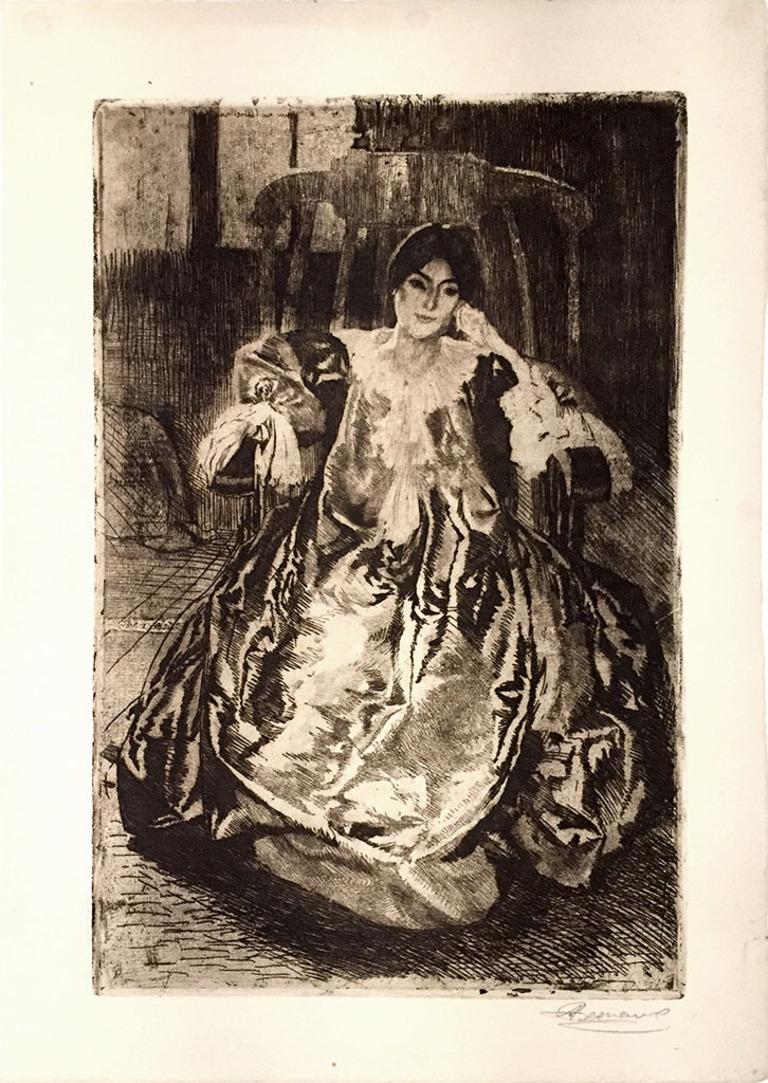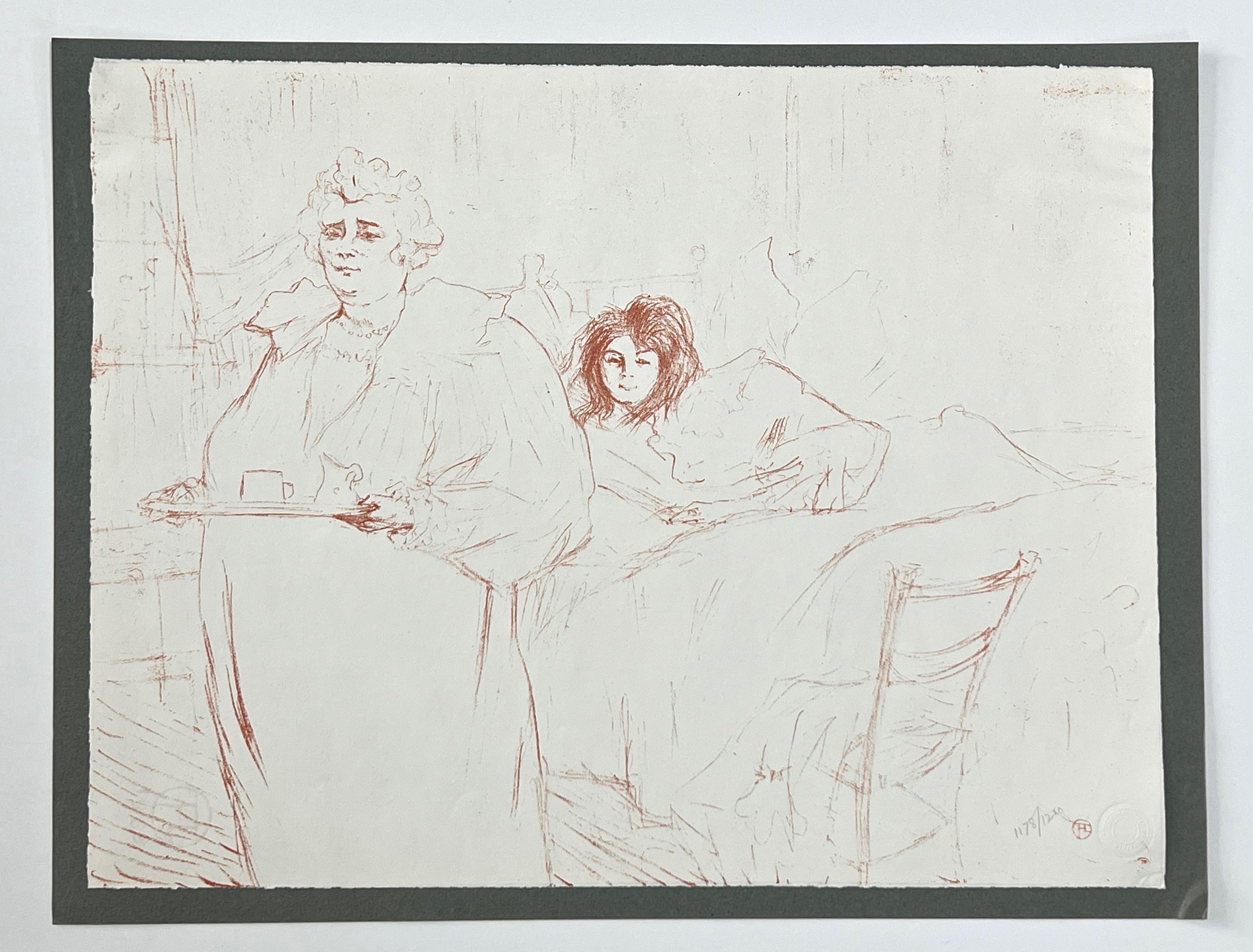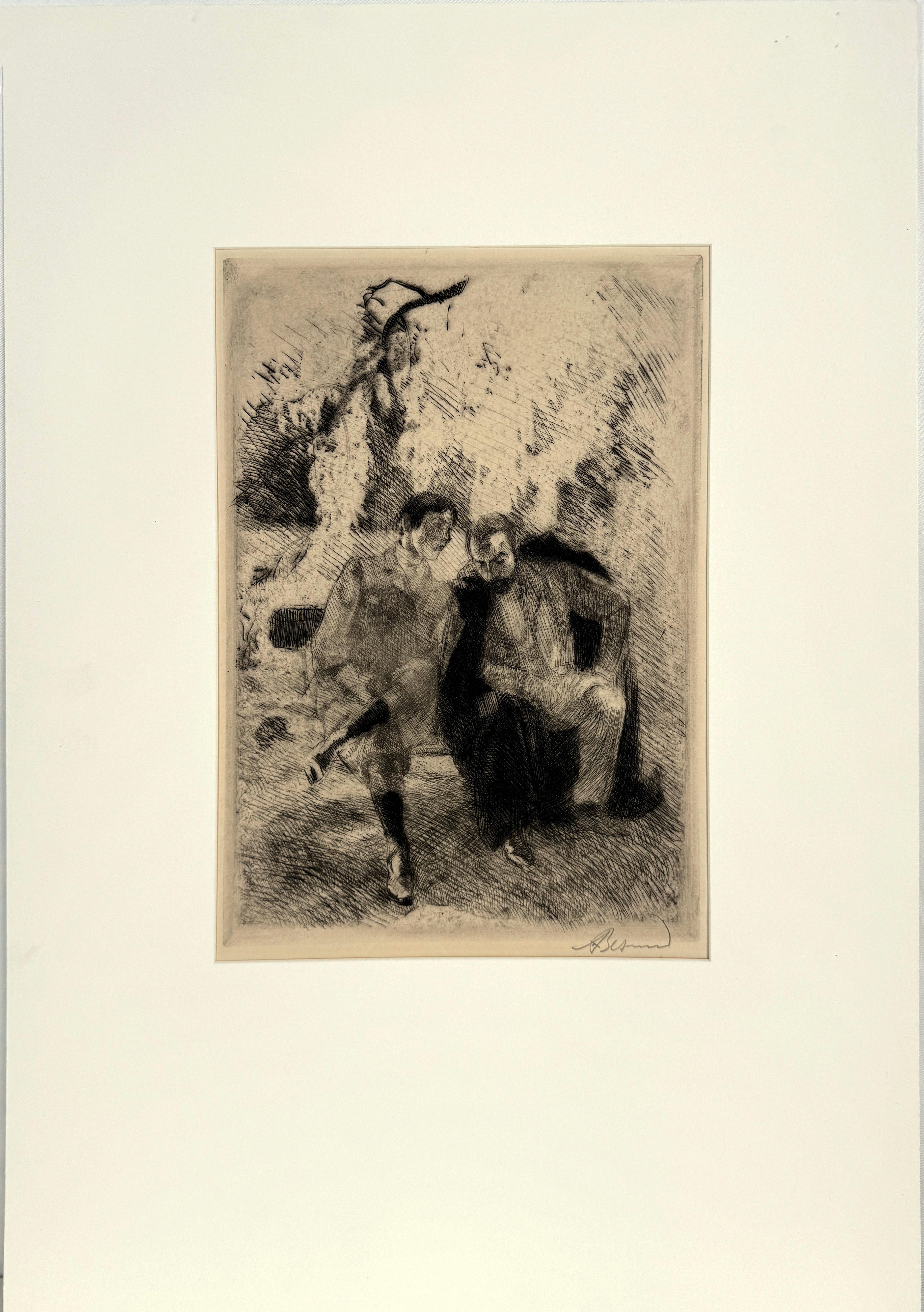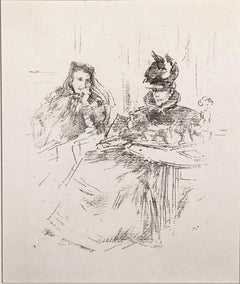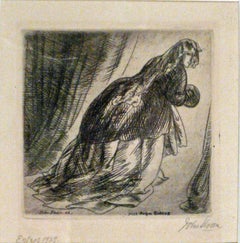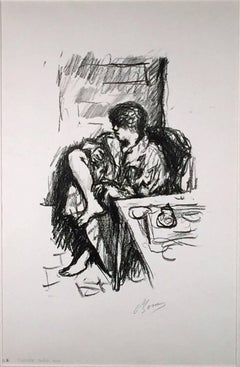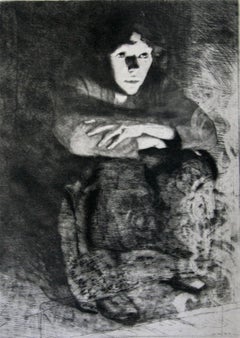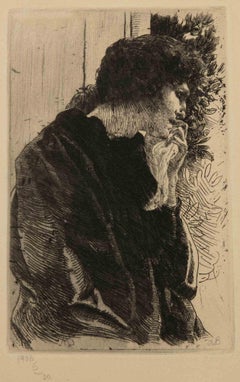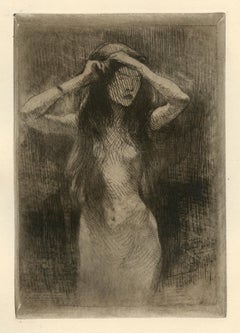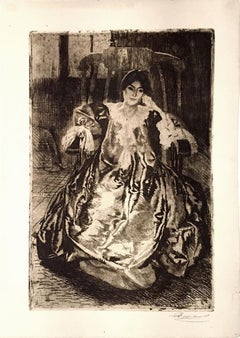Items Similar to DEJEUNER
Want more images or videos?
Request additional images or videos from the seller
1 of 5
Albert BesnardDEJEUNER
$875
£678.19
€767.87
CA$1,252.49
A$1,365.72
CHF 709.83
MX$16,349.53
NOK 9,003.54
SEK 8,433.50
DKK 5,735.03
About the Item
Besnard, Albert. DEJEUNER. D.50.
Etching and Drypoint, 1886.
Edition of 100.
12 3/8 x 9 5/8 inches, 315 x 243 mm., with small margins (probably trimmed).
Signed in pencil and annotated "Tiree a 100" (in pencil over an erasure).
A fine impression in excellent condition.
- Creator:Albert Besnard (1849 - 1934, French)
- Dimensions:Height: 20 in (50.8 cm)Width: 16 in (40.64 cm)
- Medium:
- Period:
- Condition:
- Gallery Location:Portland, ME
- Reference Number:Seller: 76871stDibs: LU36732891341
About the Seller
5.0
Recognized Seller
These prestigious sellers are industry leaders and represent the highest echelon for item quality and design.
Platinum Seller
Premium sellers with a 4.7+ rating and 24-hour response times
Established in 1966
1stDibs seller since 2016
358 sales on 1stDibs
Typical response time: 1 hour
Associations
International Fine Print Dealers Association
- ShippingRetrieving quote...Shipping from: Portland, ME
- Return Policy
More From This Seller
View AllLE POTIN
By Jacques Villon
Located in Portland, ME
Villon, Jacques (French, 1875-1963) LE POTIN (GP E96) Drypoint and aquatint printed in green, 1904, Edition of 50. Printed on Arches paper, signed and numbered 32 in pencil. Publishe...
Category
Early 1900s Figurative Prints
Materials
Drypoint, Aquatint
AFTERNOON TEA
By James Abbott McNeill Whistler
Located in Portland, ME
Whistler, James A. M. AFTERNOON TEA. Way 147, Levy 114, TS&S 173. Lithograph, 1897. The only State, printed by Clot in an edition of 100, and published b...
Category
1890s Figurative Prints
Materials
Lithograph
RENDEZVOUS (SMALL)
By John French Sloan
Located in Portland, ME
Sloan, John. RENDEZVOUS (Small). Morse 227. Etching, 1926.
Second State, with the pupil added to the left eye, The published
state, titled "Miss Angna Enters...
Category
1920s Figurative Prints
Materials
Etching
LA TOILETTE ASSISE
By Pierre Bonnard
Located in Portland, ME
Bonnard, Pierre. LA TOILETTE ASSISE (Woman Dressing, Seated). Bouvet, 96. Lithograph printed in black, 1925. First State, before the addition of the Monogr...
Category
1920s Post-Impressionist Figurative Prints
Materials
Lithograph
LA PARISIENNE
By Jacques Villon
Located in Portland, ME
Villon, Jacques (1875-1963). LA PARISIENNE (TOURNEE A GAUCHE, PETITE PLANCHE). G PE93. Etching and aquatint in colors, 1904. Edition of 100 Printed on cr...
Category
Early 1900s Figurative Prints
Materials
Etching, Aquatint
L'ENFANT S'AMUSE
By William Lee Hankey
Located in Portland, ME
Hankey, William Lee (Britain, 1869-1952). L'ENFANT S'AMUSE. Etching, not dated. Signed in pencil and impressed with the artist's monogram chop, and also monogrammed and marked with a...
Category
Mid-20th Century Figurative Prints
Materials
Etching
You May Also Like
Dans les Cendres (In the embers)
By Albert Besnard
Located in Storrs, CT
Dans les Cendres (In the embers). 1887. Delteil catalog 67 state iii. State after the plate was cut down and a second figure eliminated (the two earlier states are of the greatest rarity). Etching, drypoint and roulette. 16 3/4 x 12 1/8 (sheet 19 1/2 x 14). Edition 50. Illustrated: Print Collector's Quarterly 9 (1921): 254. A very rich impression with plate tone and drypoint burr, printed on simili-japon. Provenance: Frederick Keppel & Co. This is one of the artist's most striking images. Signed in pencil. Housed in 25 x 20-inch archival mat, suitable for framing.
Paul Albert Besnard, was an impressionist painter. In 1866, the seventeen-year-old son of artist parents began his studies at the École des Beaux-Arts Paris. In 1874, Besnard won the important Prix de Rome, with which the academy distinguished young talent. A portion of the scholarship is a stay of several years in Rome. Besnard married Charlotte Dubray, a sculptress, during this time in Rome. The couple lived in England, where Besnard exhibited at the Royal Academy London, between 1881 and 1884. He became involved with English portrait painting during this period, which had a lasting influence on his work.
In the years that followed, Besnard broke with the academic tradition. In 1886, he presented the portrait of Madame Roger Jourdain...
Category
Late 19th Century Impressionist Figurative Prints
Materials
Drypoint, Etching
$1,250 Sale Price
37% Off
Sadness - Etching by Albert Besnard - 1909
By Albert Besnard
Located in Roma, IT
Sadness is an etching realized by Albert Besnard in 1909.
Etching ex. 6/30.
Slab dimension cm. 15 x 9,5. paper cm. 25 x 18.
Pencil signature and date in the lower right part, date in the left part.
Good conditions.
Paul Albert Besnard (Parigi 1849 - 1934)born in Paris, was the son of an artist; his father, Louis Adolphe, was a painter and his mother, Louise Pauline Vaillant, was an esteemed miniaturist, a pupil of Lizinska de Mirbel. Besnard first studied drawing and
painting with Jean-François Brémond and at 17 entered the École des Beaux-Arts, where he was taught by Alexandre Cabanel.
In 1874 he won the Prix de Rome with the canvas "Death of Timofane, tyrant of Corinth", and during his stay at Villa Medici he had the opportunity to meet Franz Liszt and his pupil André Worsmer, whose portrait he painted in 1877. his stay in Italy and, in
1879he married the sculptor Charlotte Dubray, daughter of the sculptor Gabriel-Vital Dubray, with whom he moved to England for three years, until 1884, exhibiting at the Royal Academy of Arts in London.
At the Paris Salon of 1886 his "Portrait of Madame Roger Jourdain...
Category
Early 1900s Modern Figurative Prints
Materials
Etching
"Etude" original etching
By Albert Besnard
Located in Henderson, NV
Medium: original etching. From the rare 1897 portfolio "Art et Nature" by Leon Roger-Miles, published in Paris by Boudet in an edition of 525. A beautiful impression on Marais wove p...
Category
1890s Prints and Multiples
Materials
Etching
La Robe de Soie - Etching by Albert Besnard - 1880s
By Albert Besnard
Located in Roma, IT
Beautiful print in black bister on verge, in excellent conditions, signed by the artist in pencil.
Three very small traces of glue on margin of sheet on verso. Full margins.
Ref. Cat...
Category
1880s Modern Figurative Prints
Materials
Etching
"Le dejeuner du matin" lithograph
By (After) Henri Toulouse Lautrec
Located in Henderson, NV
Medium: lithograph (after Toulouse-Lautrec). In 1896 Toulouse-Lautrec executed his Elles portfolio, and the lithograph offered here is a faithful limited edition replica. It was prin...
Category
1960s Prints and Multiples
Materials
Lithograph
"Confidences" James Abbott McNeill Whistler Conversation with a Fellow Artist
By Paul Albert BESNARD
Located in Soquel, CA
"Confidences" James Abbott McNeill Whistler Conversation with a Fellow Artist
"Confidences" James Abbott McNeill Whistler Conversation with a Fellow Artist
A Drypoint etching on Wove...
Category
Early 1900s Impressionist Figurative Prints
Materials
Handmade Paper, Drypoint, Etching
More Ways To Browse
Sascha Schneider
Sean Caulfield
Sebastien Leclerc
Shabbat Shalom
Shag Agle
Shalom Moskowitz Shalom Of Safed
Shepard Fairey Oil
Spoleto Poster
Stag Salvador Dali
Suffering Moses
Sufi Art
Tadashige Ono
Takahashi Shotei Prints
Takashi Murakami Doraemon
Takashi Murakami Panda With Cubs
Tarkay Serigraph
Tate Modern Exhibition Poster
The Offs First Record
